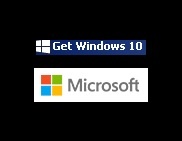
Windows 10 and should you upgrade?
If you google “Windows 10 upgrade” you will find hundreds of articles that give you reasons why you should and shouldn’t upgrade. The issue with these articles are that they are geared towards consumers and not business. Larger business will usually have in house IT staff to give them advice but what of small business such as health care practices?
A lot of the issues remain the same for business small and large but the number one issue before considering an upgrade is will ALL of my programs work on the new Windows? Not some or most but ALL. So before you shell out a cent (more on that later) contact your software vendors and make sure that their software will work on the new windows.
If you’ve ever worked in a corporate you’ll know that they usually hold off upgrading Windows to the latest version for as long as possible. Why? Cost. Upgrading Windows is a hugely expensive exercise when you take into account:
- the time it takes for windows to upgrade
- the cost of Windows software itself
- the time to migrate data
- the time for staff to adjust to new interface
- the cost of training staff, and
- last but not least the cost of having tech people do the whole thing
Then once that’s all done there’s the cost of fixing all the unforeseen problems after the upgrade. Being a small business that’s enough to lose the last few strands of hair you have left after all the stress of running a small business.
So as a small business what are the advantages and disadvantages of upgrading?
Advantages
Security.
Once Microsoft stops supporting any of its older Operating Systems – systems like Windows XP or Server 2003 – they stop creating patches for it meaning that any new security holes will stay open and hackers will be able to infiltrate your PC via a virus much more easily. Large companies can deal with these issues much better generally because they usually have dedicated technical staff, much more expensive gear and are generally much more restrictive on data access to protect them.
In saying this Microsoft have a policy of supporting operating systems for quite a long time usually in the vicinity of 10 years. I’ve listed the end date for operating systems after Windows XP:
- Windows Vista extended support ends on 11th January 2017
- Windows 7 extended support ends on 14th January 2020
- Windows 8 extended support ends on 1st September 2023.
Software Compatibility.
Using the same scenario as above – most small business generally use some sort of proprietary software be it accounting, medical, dental… and they will also generally stop supporting older Operating Systems once Microsoft stops supporting them. For example I had a client who was still running a few Windows XP workstations and within 2 months of the End of Life for XP, they ran an update for the proprietary software and immediately all Windows XP workstations running that software starting crashing. Staff had to jump on other workstations running Windows 7 or 8 to do work. This will be much more common place as time goes on with software vendors stop supporting older operating systems, and is definitely not ideal when all you want to do in a health care setting is look after your patients!
Less important but something to consider is Consistency.
Nearly all the medical and dental practices that I’ve worked with have staff jumping from machine to machine depending on what they need to do and upgrading all your computers to have a similar look and feel can help staff be more efficient.
It’s free!
Until July 2016 upgrading to windows 10 is free! This is a limited time offer from Microsoft to get everyone onto its latest operating system. Microsoft is offering any PC running windows 7, 8 or 8.1 a free upgrade to Windows 10 for the first year of its release. Unfortunately if you are running Vista then you’ll have to purchase Windows 10 upgrade.
Disadvantages
The biggest disadvantage is the cost. Here I’m talking about cost associated with time.
Even if you get the software for free, for a small office environment it will still take a very long time to upgrade all the PCs in the office. And as much as you prepare for it things will go wrong. Even if you decided to do it yourself the potential downtime to you and your staff could add up or you will be spending quite a few weekends in the office doing the upgrade.
If you decide to download the upgrade (which is the simplest way) on every PC it will use up a lot of your internet bandwidth and will also take a very long time i.e. each download will be about 3 to 3.5 GB. In saying that if you are more technically inclined you can download the software from Microsoft and put it on DVD or a USB thumb drive and install it that way.
Did I mention it takes quite a long time?
With anything computer related it will always take longer than you think. Microsoft states that after it has downloaded expect it to take about an hour for the upgrade to be complete.  In my experience allow 2 hours per PC minimum and that’s not taking into account the time to download it. Remember that after the upgrade is complete and assuming nothing went wrong you will still have to download updates and patches after the upgrade is complete. Then you will need to check to make sure everything is working like printers, scanners, anti-virus upgrades, and most importantly make sure that any programs (e.g. Genie, Best Practice, Dental for Windows, Practice Works, Medical Director, Optomate) you use are all working properly. This all takes time. Which will either translate into cost or time away from family and friends.
In my experience allow 2 hours per PC minimum and that’s not taking into account the time to download it. Remember that after the upgrade is complete and assuming nothing went wrong you will still have to download updates and patches after the upgrade is complete. Then you will need to check to make sure everything is working like printers, scanners, anti-virus upgrades, and most importantly make sure that any programs (e.g. Genie, Best Practice, Dental for Windows, Practice Works, Medical Director, Optomate) you use are all working properly. This all takes time. Which will either translate into cost or time away from family and friends.
Obviously to speed up the process you can run the upgrade of a few PC’s in parallel. This has its own issues. Even if you started all the upgrades at the same time they will all finish as different times and it makes keeping track of what has and hasn’t been done on each PC even more important.
As always, before any major upgrades such as this make sure to do full backups of any important data on the PC. Although in theory if you have a server all important data should be on the server but with most small business setups you will most likely have staff saving data on the desktop (instead of creating a shortcut to it from the server). Most importantly backup your emails! It’s so easy to forget. Depending on how it’s setup, all of yours and your staff emails are probably being stored on the PC itself. Again this all takes time.
Incompatible software or hardware.
Most of the time it’s easy to miss the most obvious things like printers. If printers or scanners are old and not compatible you could have a major headache or cost to get them working. Sometimes they just won’t work at all.
Less likely but can still pose a problem especially with propriety hardware like Dell, HP etc – older PC hardware won’t always work well either if not compatible with the newer software.
Old software programs may not be compatible and may not work at all. I’ve had businesses use specialised software where the software company had closed but the program still works so they may see no need to go out and change to a newer system. In this case it’s often safest to never upgrade that particular PC. Obviously you would expect issues with security especially if you need to use the internet.
Complaints
Like anything there will be the usual complaints as the visual change is quite dramatic especially if you are upgrading from Windows 7 the change will be a shock to the system. Like anything it won’t take too long to re-adjust but none the less there will be complaints especially from people who are heavier users of the system as lots of things have been moved around. Staff who just use Office and Proprietary Software won’t be affected too much.
In Summary
From a technical perspective in my opinion Windows 10 is a worthy upgrade especially from Windows 8/8.1 as it combines the more familiar layout of Windows 7 and the more modern Windows 8. Complaints of Windows 8 were mostly to do with visual issues i.e. people didn’t like the way it looked and worked on a PC vs touch screen tablet. However, underneath Windows 8 the core is a solid one and Windows 10 builds upon that. If you have older hardware you’ll probably notice a bit of a boost in performance over Windows 7 too which is always a good thing.
BUT
Is it worth upgrading? Well it depends. If you are running any of the newer versions listed above then you’ve still got a few years until support stops so most likely any other software you run will also be supported. The money you save getting the software free will most likely not matter as the costs involved upgrading will most likely heavily outweigh the savings. In any case in the next few years you’ll probably need to replace a PC or two and it will come preinstalled with Windows 10. If you are running Windows XP then for the cost you’re probably better off getting a new workstation with Windows 10 pre-installed.
 Loc Nguyen is a lifelong technology geek whose aim in life is to deliver simple, workable IT solutions. Crusading during daylight hours to keep health practitioners up and running to allow them to do what they do best – looking after their patients, come sundown he protects their data by managing their backups with his proprietary LockDown system. Loc’s clients include medical practices, dentists, an orthodontist and an ophthalmologist. Go to www.locnguyen.com.au for more information about his services and to contact him for a technology solution tailored to your practice.
Loc Nguyen is a lifelong technology geek whose aim in life is to deliver simple, workable IT solutions. Crusading during daylight hours to keep health practitioners up and running to allow them to do what they do best – looking after their patients, come sundown he protects their data by managing their backups with his proprietary LockDown system. Loc’s clients include medical practices, dentists, an orthodontist and an ophthalmologist. Go to www.locnguyen.com.au for more information about his services and to contact him for a technology solution tailored to your practice.
More articles on My Health Career:
- The top 5 things I (didn’t) know about online business – by Dr Rebecca Ray – psychologist and founder of Happi Habits
- Hiring secrets from Richard Branson and Naomi Simpson
- From burnout to successful practice, a young family and volunteer projects – by dentist Dr Rachel Hall
Image: edited from Clive Darra’s image on flickr
Image: (clock) Alexas_Fotos – Pixabay
